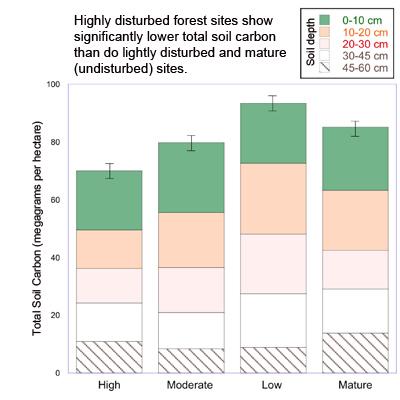Carbon Benefits of Fuel Switching from Oil to Wood across the Northern Forest

Globally, soils store more than 1500 gigatons (billions of metric tons) of carbon, more than what is held by our atmosphere and vegetation combined. Seventy percent of the total forest carbon pool is stored in soils, and more than 50% of soil organic carbon is stored within deeper mineral horizons. Previous work has demonstrated an initial loss of carbon from the forest floor after harvesting, but it has been assumed that deeper mineral soil carbon pools do not exhibit a detectable change after harvest. However, recent work from Nova Scotia suggests that forest harvesting can influence the quantity and quality of mineral soil carbon.
Rising fuel costs are increasing pressures to harvest wood biomass to meet our energy needs, especially in the northeastern U.S. To further examine carbon release from mineral soil during forest harvest, NSRC researchers analyzed mineral soils at Bartlett Experimental Forest in the White Mountains of New Hampshire on four sites: highly disturbed, moderately disturbed, lightly disturbed, and undisturbed by harvesting.
Researchers found a relationship between degree of disturbance and carbon concentration in soil 10-30 cm beneath the organic soil horizon. Highly disturbed sites showed carbon depletion, with horizons from the most disturbed sites containing 25% less total carbon than the least disturbed sites. Carbon loss from soils after harvest is related to physical disturbance, occurs at depths greater than what has actually been physically disturbed, and extends well beyond the first few years post-harvest. These findings suggest that we should re-examine the validity of treating harvested wood biomass as a carbon neutral energy source.
